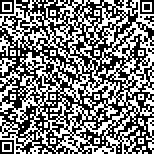何晓阔,雷蕾,余果,等.功能性电刺激辅助步行时脑卒中偏瘫患者的脑激活模式[J].中华物理医学与康复杂志,2022,44(9):774-778
扫码阅读全文

|
| 功能性电刺激辅助步行时脑卒中偏瘫患者的脑激活模式 |
|
| |
| DOI:10.3760/cma.j.issn.0254-1424.2022.09.002 |
| 中文关键词: 脑卒中 偏瘫患者 脑激活模式 功能性近红外光谱技术 功能性电刺激 |
| 英文关键词: Stroke Hemiplegia Brain activation patterns Functional near-infrared spectroscopy Functional electrical stimulation |
| 基金项目:福建省科技计划项目(2020D025),福建省医学创新项目(2020CXB052),厦门市科技计划项目(3502Z20199100,3502Z20214ZD1261) |
|
| 摘要点击次数: 5241 |
| 全文下载次数: 5029 |
| 中文摘要: |
| 目的 采用功能性近红外光谱技术(fNIRS)实时监测脑卒中偏瘫患者在功能性电刺激辅助其步行时的脑激活特点。 方法 招募右侧偏瘫的脑卒中患者8例,平均年龄(44.41±7.23)岁,采用自身对照方法,在跑台上以2 km/h的速度完成单纯步行和FES辅助步行任务各1次,同时进行实时fNIRS脑功能信号采集。在Matlab环境下,采用NIRS-SPM工具包计算受试者在完成单纯步行和FES辅助步行时不同脑区的携氧血红蛋白浓度变化,通过一般线性模型整合任务效应,采用SPSS 20.0版统计学软件对beta值进行单样本或配对样本t检验,输出具有显著性差异的激活热点图。 结果 偏瘫患者在完成单纯步行任务时被激活的通道有ch8、ch10、ch11、ch13、ch14、ch15、ch16、ch17、ch18、ch19、ch20、ch23、ch24、ch25、ch26、ch27、ch28、ch30、ch32、ch33、ch34、ch35、ch36、ch37;在FES辅助步行时被显著激活的通道有ch8、ch9、ch10、ch11、ch13、ch14、ch15、ch16、ch17、ch18、ch19、ch20、ch22、ch23、ch24、ch25、ch26、ch27、ch28、ch30、ch31、ch32、ch33、ch34、ch35、ch36、ch37。该结果提示,单纯步行任务和FES辅助步行时共同激活的脑区均以健侧半球M1区激活为主,患侧半球M1和SMA、PMC、S1区激活为辅。比较不同步行任务下差异激活的脑区,输出存在显著差异的通道有ch9、ch24、ch27、ch32、ch33,该结果提示,相比单纯步行任务,FES辅助步行可额外增强健侧S1、患侧SMA和PMC的激活水平。 结论 脑卒中后偏瘫患者在单纯步行或FES辅助步行任务时均表现为双侧M1区的不对称性激活模式,而FES可显著增强患侧PMC和SMA区的代偿性激活模式,即FES辅助步行对偏瘫患者存在脑激活效应。 |
| 英文摘要: |
| Objective To explore the characteristics of cortical activation during the stimulation-assisted walking of hemiplegic stroke survivors using functional near-infrared spectroscopy (fNIRS). Methods Eight stroke survivors with right hemiplegia (average age 44.4±7.2 years) in a self-controlled study each walked at 2km/h on a treadmill, alone and assisted by functional electronic stimulation (FES). Real-time near-infrared spectroscopic images were recorded. The Matlab NIRS-SPM toolkit was employed to calculate the changes in oxyhemoglobin concentration in different cortical regions. A general linear model was evaluated which integrated the task effects, and version 20.0 of the SPSS statistical software was used to perform single sample or paired sample t-tests of the beta values so as to produce activation hot maps of the significant differences. Results During unassisted walking channels 8, 10, 11, 13-20, 23-28, 30 and 32-37 were significantly activated. During FES-assisted walking it was the same channels plus channels 9 and 22, 31. The results suggest that in walking the cortical regions activated are mainly located in M1 of the unaffected hemisphere, supplemented by M1 and SMA, PMC and S1 in the affected hemisphere. There were significant differences in the activation of channels 9, 24, 27, 32, 33 between the two walking tasks. FES-assistance enhances S1 activation on the unaffected side, as well as the SMA and PMC of the affected side more significantly. Conclusions Bilateral asymmetrical activation is found mostly in M1 during walking with or without FES assistance. FES assistance significantly strengthens the compensatory activation of the PMC and SMA of the affected hemisphere while walking for those with hemiplegia. |
|
查看全文
查看/发表评论 下载PDF阅读器 |
| 关闭 |
|
|
|